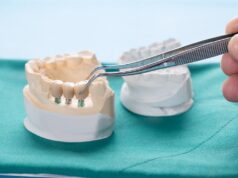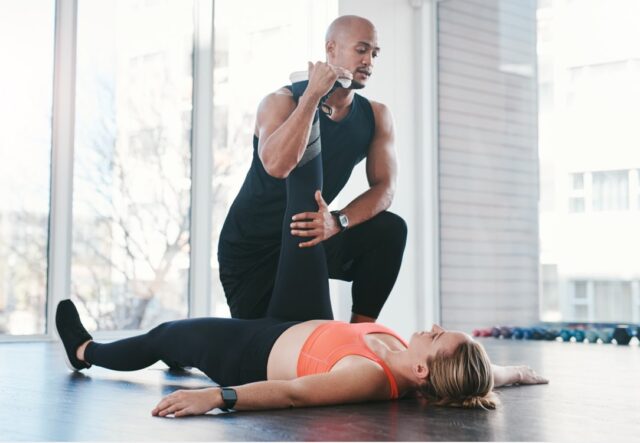
Feeling stiff even though you barely move? Or maybe you stretch sometimes and still feel tight. What if you didn’t have to do it all yourself? Assisted stretching sounds like something only athletes use, but more everyday people are finding out it works better than they expected. It’s not a luxury anymore ─ it’s a shortcut to feeling looser, lighter, and just plain better.
Let’s talk about what it actually is, how it feels, and why people keep going back for more. If you’ve never had someone stretch you while you just lie there, it’s a strange concept at first. But once you try it, your body starts to wonder where it’s been all your life.
What Is Assisted Stretching and Why Does It Feel So Good?
Assisted stretching means a trained specialist moves your body for you in ways you can’t easily do on your own. Think of it as stretching, but with help ─ someone else gently pulling, rotating, and holding your limbs in just the right spots. It’s not a massage. It’s not exercise. But it’s definitely not passive either. You’re working, just not how you’re used to.
What makes it different from regular stretching at home is precision. A specialist can get your body into positions that go deeper than you can do on your own. They know when to push, when to pause, and how to hit spots you didn’t even know were tight. It’s like your hamstrings have been hiding secrets, and now they’re finally talking.
Some people feel a little awkward at first, lying on a table while someone moves their leg around. But after a few minutes, you settle into a rhythm. Muscles soften. Joints release. That stuck feeling starts to disappear. You walk out taller. Straighter. Like your body just remembered how to be comfortable again.
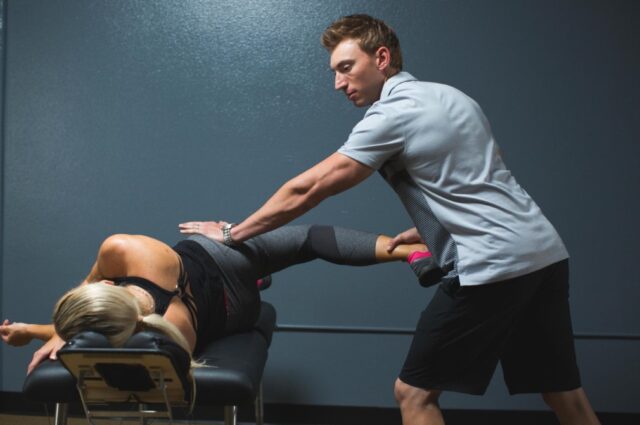
Why It’s Catching On Outside the Gym
You used to see this kind of stretching in locker rooms and training facilities. Now it’s showing up in strip malls, wellness studios, and even mobile setups that come to your house. What changed? People got tired of feeling stiff, tired, and out of alignment—especially after long workdays, stressful weeks, or nonstop screen time.
And here’s the twist: you don’t have to be flexible to benefit from assisted stretching. In fact, the tighter you are, the more it helps. If touching your toes feels like reaching for the moon, you’re probably a perfect candidate. It’s made for people who sit too long, sleep weirdly, or just don’t move enough anymore.
The growth of stretching studios is also tied to something deeper: we’re realizing that stiffness isn’t just about age or fitness. It’s about stress. Movement. Energy. Stretching has a way of waking the body back up. You feel more open, more balanced, more in tune with how everything connects.
And because you’re not doing it alone, you’re more likely to stick with it. It becomes a routine, not a chore. You show up, breathe, and let someone guide your body back into place. It’s physical therapy without the pain. Self-care that actually works.
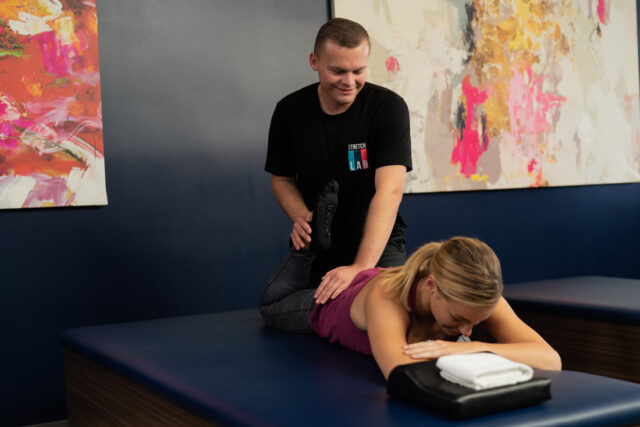
What Happens During a Session (And Why It’s Not As Weird As You Think)
Most sessions start on a padded table in a quiet room. You lie back. A specialist greets you, asks about injuries, and explains what they’re going to do. Then it starts—slow, intentional movements designed to open up tight hips, shoulders, hamstrings, or wherever you’re holding tension.
They stretch you in ways that feel good but also challenge your limits just enough. It’s not a push-until-it-hurts situation. It’s controlled. You stay relaxed while they do the work, but you also feel surprisingly engaged. Your breath matters. So does communication.
It’s common to feel a little emotional during or after a session. Not in a bad way ─ more like your body is releasing something you didn’t know you were holding. That deep stretch in your hips? It might bring a strange wave of relief. That twist in your spine? It might unlock something mentally too. The mental health benefits sneak up on you. Your brain feels clearer. Your mood lifts. You feel like you got a massage, a yoga class, and a pep talk all in one.
Over time, the changes become noticeable. You sit with better posture. Your lower back doesn’t scream after long drives. Your workouts feel smoother. Even walking feels lighter. It’s subtle at first, then impossible to ignore.
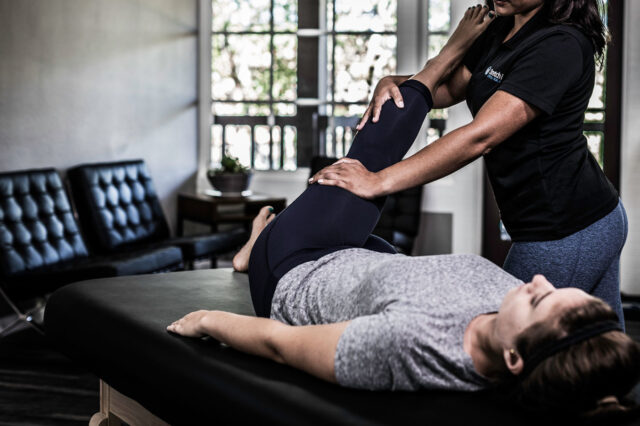
How to Find a Good Place (And What to Look For)
The best way to start is to search online for “stretching near me” and find centers that offer it. You’ll probably be surprised how many are nearby. Look for places that offer personalized sessions with trained staff ─ not just automated machines or generic routines. You want a real human who listens, adjusts, and knows how the body works.
Ask questions. What kind of training do the staff have? Is the focus on recovery, mobility, or something more general? Some spots are more clinical, while others lean into the spa vibe. Both can work ─ it just depends on your comfort level and what you’re hoping to get from it.
Try a short session first. Most places offer a trial or intro rate. One visit can tell you a lot. Did you feel cared for? Was it relaxing or rushed? Did they explain things clearly? Your gut usually knows. If you walk out feeling like your joints just sighed with relief, you’re probably in the right spot.
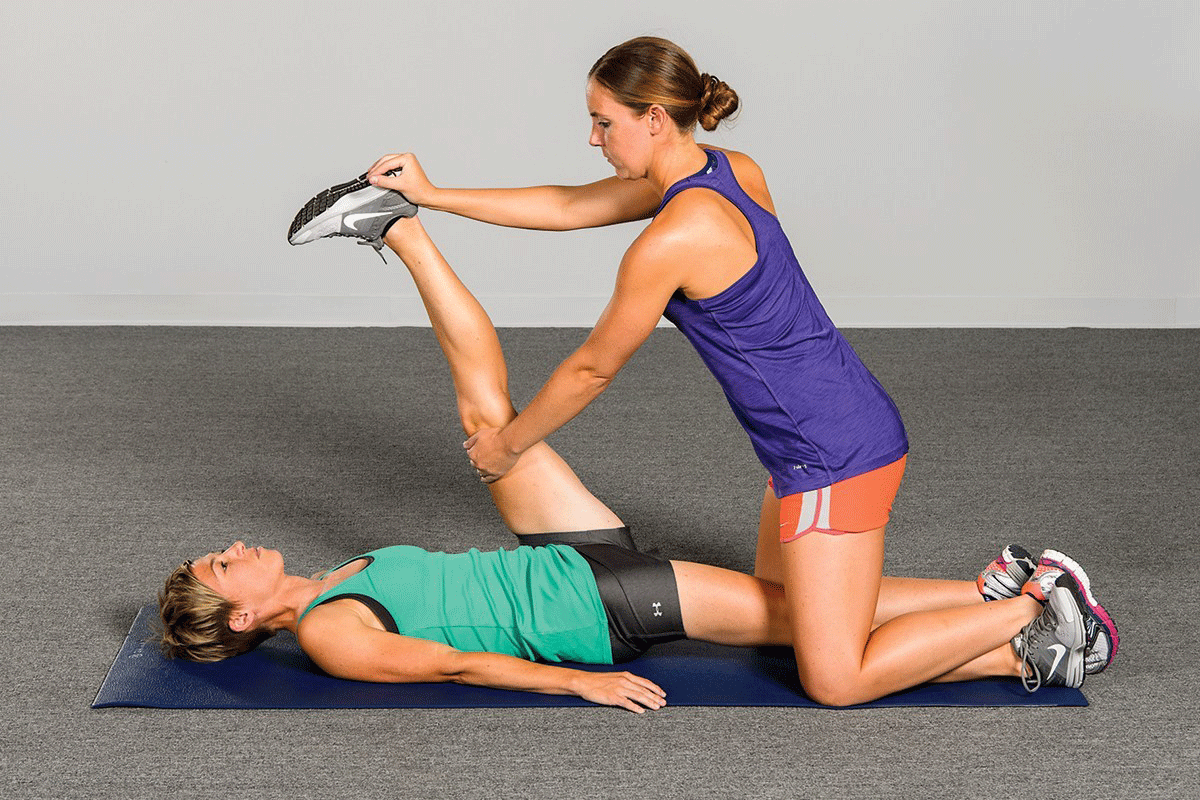
Why Everyone’s Talking About It ─ and What It Means for You
Assisted stretching is gaining attention for a reason. It’s one of the few wellness trends that doesn’t require special clothes, extreme effort, or a gym membership. It works for people of all ages and activity levels. And most of all, it fills a gap we’ve ignored too long: the need to move better, not just more.
You don’t have to love working out to love assisted stretching. You just need to want to feel better in your body. To move without stiffness. To sleep without tossing. To sit without aching. It’s one of the simplest ways to reconnect with yourself.
Your body wasn’t meant to feel stuck. Let someone help you get moving again.

